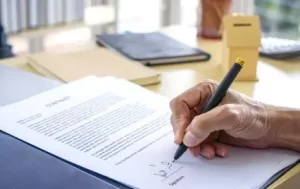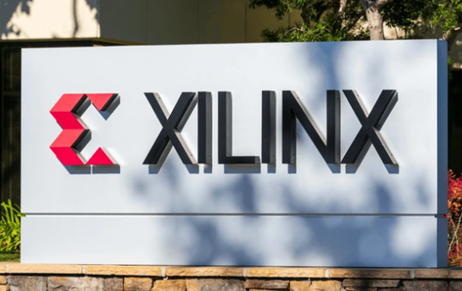Xilinx is a leading technology company focused on innovation and creating and monetizing its Intellectual…
Compulsory Licensing in the United States
Compulsory license is common throughout the world but is virtually absent in the United States. Compulsory licensing enables the government granting the patent to force the patentee to license the invention if the government does not approve of the patent’s use. Consequently, another individual or company is allowed to make and sell the invention. The threat of compulsory licensing encourages parties to grant licenses voluntarily. Voluntary licensing presents an attractive option for the foreign patent holder because it is a superior method for penetrating a foreign market with little or no investment and labour contribution, advantages absent when manufacturing occurs directly in the foreign country. Voluntary licensing also reduces the risks involved in starting operations in a foreign country by eliminating the necessity of having to understand and work within the confines of an unfamiliar production environment. Businesses with extensive resources, however, may prefer direct production in a foreign country over licensing to a local company. Many United States enterprises prefer this approach due to the greater profits possible when a company decides to produce a good itself. Compulsory licensing simply furthers the public interest over the interests of a businessperson or patent holder.
The grounds for granting compulsory licenses might differ from one country to the other or one government policies to the other but the grounds in the United States are as follows:

- Public Interest: Compulsory licenses based on the public interest are similar to those based on the adequate supply theory, but are only issued to control products especially vital to the public. These licenses commonly involve inventions relating to public health, welfare, or national defence-areas where the inventor’s interest may be subordinate to that of the public. Certain United States compulsory license provisions exist within this narrow category such as the Clean Air Act. Nations do not agree what constitutes the “public interest.” The United States has often granted compulsory licenses as a remedy for violations of antitrust laws, reflecting the value of free enterprise and competition in the United States. Compulsory licensing schemes are justified on the ground that they increase public access to inventions. A government’s ability to control the compulsory licensing process, however, may hinder innovation of products which promote the public welfare.
- Worked in the Country: Besides using compulsory licensing to guarantee adequacy of supply and to promote the public interest, some countries use compulsory licensing to ensure that the invention be “worked in the country.” Under more modem interpretations, “worked” simply means “used.” The patentee cannot hide his invention, but must exploit it and share its benefits even while maintaining exclusive rights to the profits. Application of this theory is consistent with general patent philosophies. New ideas are encouraged and the producer rewarded, but through compulsory marketing by the holder, the benefits of innovation are shared. The United States imposes no such duty on the ordinary patent holder.
The closest provision that it does have to the licensing of medicines and vaccines is what is called March-in rights. March-in rights allow the U.S. government to grant licenses to patented inventions provided the development of invention was funded using federal funds and the patent owner has not taken steps to:
- achieve practical application of the invention;
- reasonably satisfy the health and safety needs of the country;
- reasonably meet requirements for public use specified by federal regulations; or
- grant an exclusive right to use the patented invention to a party without obtaining a required promise that the invention be substantially manufactured in the U.S., or where the licensee breaches this promise.
Theoretically, March-in rights are quite powerful, however from a practical perspective, to date, no federal agency has exercised its March-in rights. 35 U.S.C § 203 of the Bayh-Dole Act of 1980, allows the U.S. government to exercise March-in rights for any invention conceived or first reduced to practice in the performance of work under a federal funding agreement. This statue is only invoked under special circumstances and requires reasonableness. However, In University of Rochester v. G.D. Searle & Co., [358 F. 3d 916 (Fed. Cir. 2004)], the Federal Circuit rejected a claim that Bayh- Dole altered the grounds for patentability. Quoting an amicus curia, the Court stated that no connection existed between the Bayh-Dole Act and the legal standards employed to access patentability. Furthermore, none of the eight policy objectives of the Bayh-Dole Act encouraged or condoned less stringent application of the patent laws to universities than to other entities.
Conclusion
While most countries provide for compulsory patent licensing, the United States does not. An analysis of the rationales given for many compulsory licensing systems may suggest the United States position to be a mistake, because compulsory licensing advances a nation’s technological development. In accordance with the broad objectives of patent laws, compulsory licensing encourages the production and use of patented goods and increases access to advanced technology. Carefully constructed compulsory licensing laws would help restore a balance between the patent system of the United States and those of other countries. To avoid issuance of a compulsory license, foreign holders of United States patents would be encouraged by these laws to grant licenses to domestic producers. The tendency of the United States to supply the world with technology made its access to foreign technology unimportant in the past. Today, however, the growing technological capabilities of many foreign countries warrant renewed consideration of not only this shift in scientific ability, but of compulsory patent licensing as well.
Author: Tanya Saraswat- a student of Narsee Monjee Institute of Management Studies (NMIMS), in case of any queries please contact/write back to us via email to chhavi@khuranaandkhurana.com or at IIPRD.



